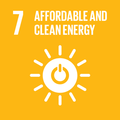Featured in

Global Opportunity Explorer2019 Insights
A celebration of on-going activities on the Global Opportunity Explorer
Climeon improves the efficiency of primary energy production by using waste heat to generate electricity, cutting bills and emissions for those with excess heat.
Climeon have created a compact device to convert low-grade waste heat from shipping, industry and geothermal resources into electricity. The low-temperature energy, which ranges between 70-120℃, heats and vaporises a fluid which then drives a turbine to create electricity. The vapours then re-condense, ready for reuse. Climeon’s technology can convert approximately 14% of low-grade heat energy into electricity, and is cost-competitive with conventional electricity sources according to the company.
In 2015, Climeon partnered with Viking Line, a passenger and cargo shipping company operating in the Baltic Sea. They installed a waste heat to energy converter in Viking Line’s ship ‘Grace’, the first LNG-fuelled passenger ship of its size. Using the waste heat generated by the ship’s engine, Climeon was able to generate one megawatt of power and cut the ship’s energy costs by between 2-5%. Climeon has since also partnered with Virgin Voyages to install multiple devices into three new cruise ships, expected to launch in 2020.
Why you should care
Many energy operations lose heat energy as a by-product of the process. Climeon’s technology works to improve efficiency and cut costs to make use of an often untapped resource.
How the Global Goals are addressed

Affordable And Clean Energy
Climeon estimates that just one 150 kW device can generate enough clean electricity to power 263 Swedish households each year.

Climate Action
The WWF estimates that if 10% of waste heat was converted to electricity by 2026, it would save over 21 million tonnes of carbon dioxide annually.


